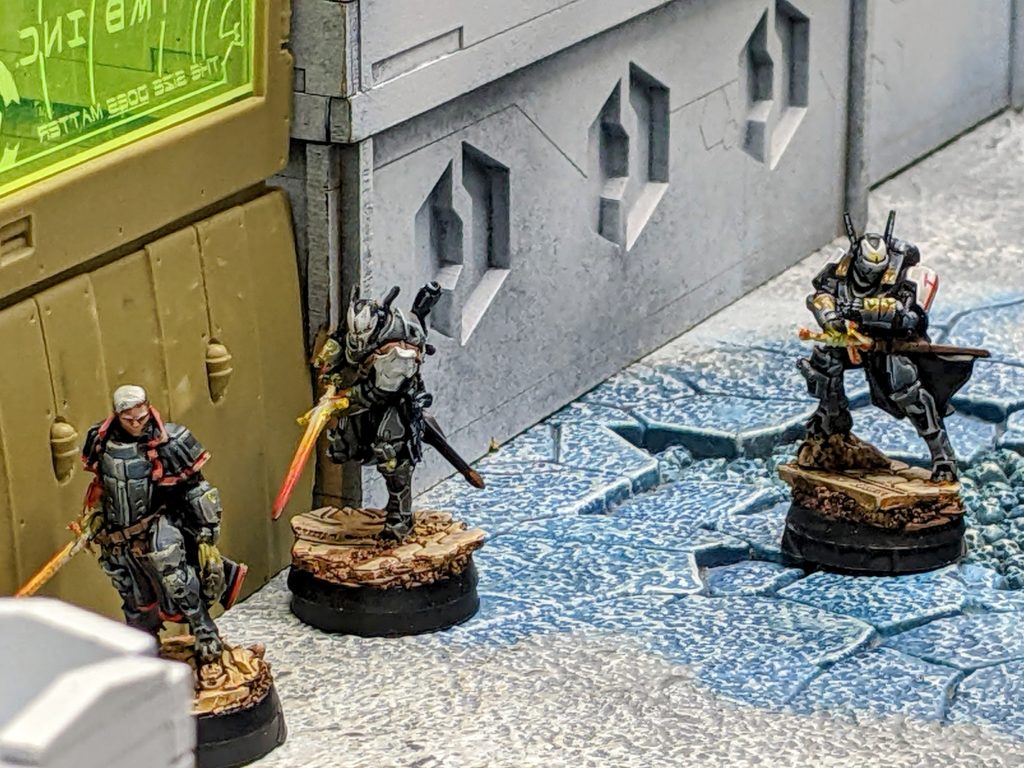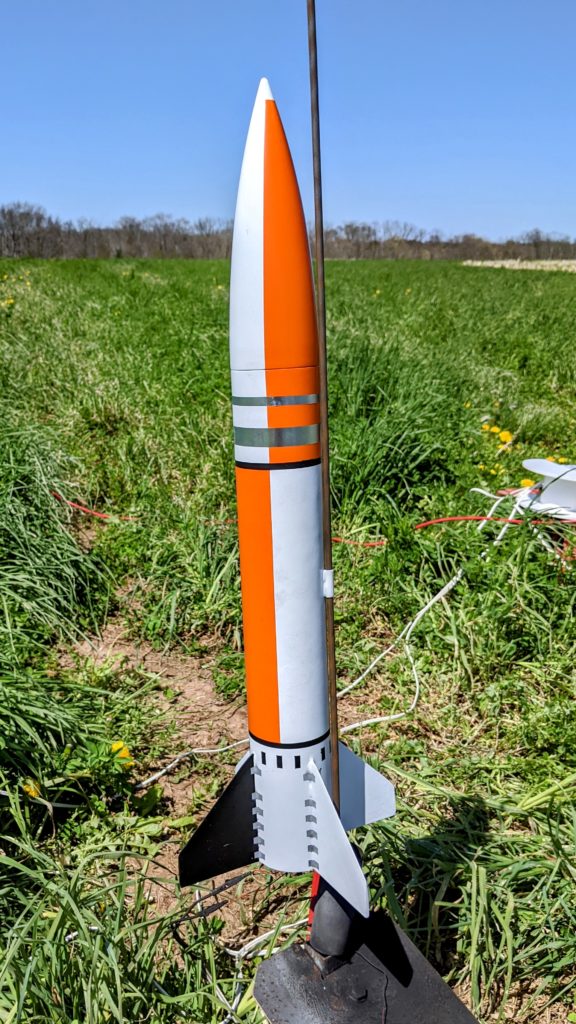Some of Don’s heavies prowling the alleyways.
Iwari
 Another new-to-me boardgame I played recently: Iwari.
Another new-to-me boardgame I played recently: Iwari.
Iwari is an abstract area control game by the designer of Coloretto, a longtime family fave, and you can feel echos of that in the design. A couple mechanics can be left out for initial games, making the whole thing quick to explain, just a couple minutes. There’s a map with large colored regions and a matching deck of color cards. You play cards to put tents or totems—your pieces—down on those regions. Halfway through there’s scoring based on how many tents you have in each region. At the end there’s another scoring based on that plus contiguous clusters of tents as well as majority control of totems in pairs of connected territories. That’s roughly it.
Even using just those baseline mechanics though it’s very good. There’s a lot of strategy to consider, like playing for tents or clusters or totems, and where. Lots of tactics too. E.g., the number of totems that can be put on a region is bound by the greatest number of one player’s tents. So, in one game, I had 3 tents in a region with space for 6, and two totems I wanted to put down more tents, but if I did that I’d expose myself to losing totem majority. There’s a lot of decision making like that.
There are some neat elements too, like mountains that get randomly placed on some connected territories so that the board’s not identical every game.
I’d say running time for unfamiliar players is something like an hour to 90 minutes. Setup is fast. Scoring takes some effort, but it’s only done twice, and there are some clever production elements to keep it manageable. E.g., territory connections are numbered, so you can resolve them in an explicit sequence.
I recommend Iwari for anybody but the most casual of gamers.
Note that there is a deluxe version that contains additional maps and optional game mechanics; I have no idea of the price or value difference but it sounds interesting.
Estes Doorknob
My build of one of the bigger Estes kits: A casual-scale model Doorknob, a research rocket designed, built, and flown by Sandia National Laboratories in the late 50s.
My construction followed the standard Estes instructions caveat running the recovery line to the motor mount. I also did the markings with spray paint instead of the provided waterslide decals. I was pleased with how the faux fin brackets turned out after being built up a bit with several layers of black and then metallic silver.
This is my favorite rocket aesthetically—that classic not-quite-stubby look, visible brackets & holes, quartered paint scheme, and orange! Just beautiful. So I was pleased this build came out well and to get a near perfect debut flight to 600ft on a somewhat windy day using an AeroTech E20-4 and Jolly Logic chute release.

